Navicular disease used to be a scary diagnosis—years ago, the term often meant that a horse’s riding days were numbered as his heel pain increased; management options were minimal. Now, however, veterinarians know more about the disease than ever, and can make many horses comfortable.
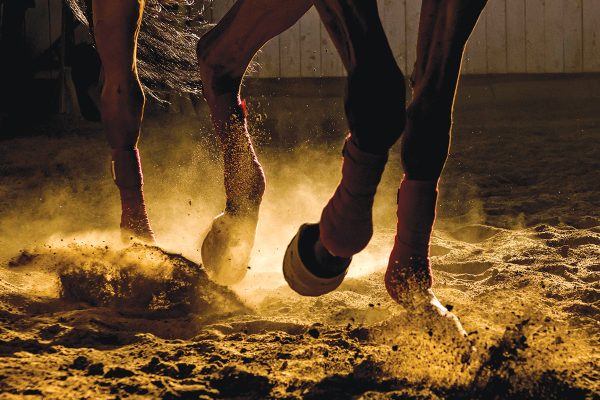
What is Navicular Disease in Horses?
The navicular bone, also called the distal sesamoid bone, is a boat-shaped bone toward the back of the hoof that aids in a horse’s movement and protects the bottom of the coffin joint. The bone is held in place by tendons and ligaments. “Navicular syndrome” is when the bone begins to degrade, damaging the surrounding tendons in the process.
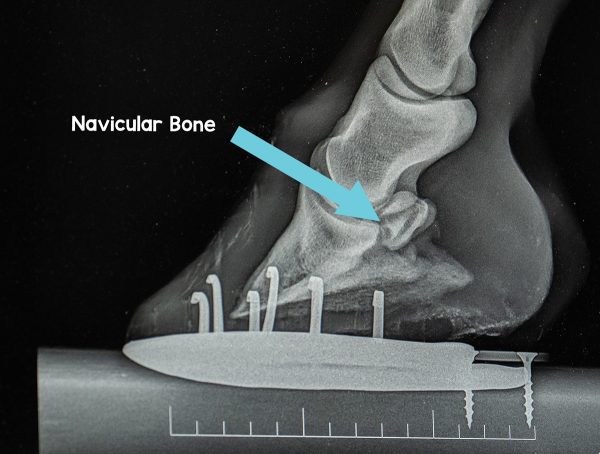
Navicular disease is one of the most common causes of lameness in horses, and it can be a frustrating diagnosis. Without X-rays and additional diagnostic tools, such as ultrasound, how badly affected the limbs are isn’t always clear.
Navicular disease often occurs in pairs (both front feet), and is often slow to develop, according to Julie Vargas, DVM, Spy Coast Farm’s resident veterinarian in Lexington, Ky., who oversees all of the rehabilitation and fitness of Spy Coast’s horses as well as those that ship in for care.
This means that though both heels on a horse hurt, he often won’t have a head nod telling you he’s lame because he’s lame on both feet equally.
Navicular usually affects both front feet, but it can happen in any hoof—including the hind limbs, though this is less common, says Dr. Vargas.
It’s believed that there is some genetic predisposition to the disease, as some breeds, including warmbloods, Quarter Horses and Thoroughbreds, are more prone to navicular than others—but any breed can develop the issue, Dr. Vargas notes.
There are some additional risk factors to developing navicular. They include:
◆ Horses with poor front-leg conformation.
◆ Horses with very small hooves.
◆ Horses that participate in disciplines that have repetitive concussion on their hooves, like racehorses.
Diagnosis
It can be tough to determine if a horse is lame from navicular disease.
A horse with navicular may shift his weight when he stands to try to take weight off his heels. When asked to walk, he may try to only bear weight on his toe. Horses with navicular often have short, choppy strides, says Dr. Vargas. They may not look lame when asked to trot in a straight line, but often will show lameness on the inside limb while circling. A horse with navicular may also develop smaller, contracted hooves from poor circulation associated with the disease.
If your horse is lame and you don’t know why, it’s best to call your veterinarian. Any diagnosis should start with a good physical exam, says Dr. Vargas. Horses with navicular will often have increased digital pulses and sensitivity to hoof testers across the heel region.
“Radiographs (X-rays) may be conclusive enough to diagnose navicular bone changes,” she says. “However, navicular syndrome is referred to as a ‘syndrome’ because it involves so many more structures than just the navicular bone.”
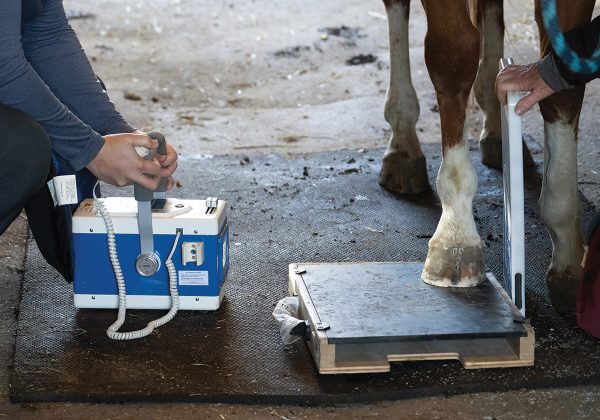
MRIs are considered the gold standard that reveal changes to additional structures and swelling in the navicular area. An MRI is not feasible for many horse owners, so if your vet thinks navicular may be the issue, she may block the nerves to the area—if this alleviates some of the pain and your horse travels more soundly, your vet will have a better indication that your horse has navicular.
Treatment for a Horse with Navicular
Your veterinarian will offer a treatment plan to make your horse more comfortable. This may include steroid injections or a long-term non-steroidal anti-inflammatory drug (NSAID), but “a good farrier is often the only treatment that is necessary for a horse with navicular,” says Dr. Vargas.
It’s important to remember that not all horses will respond well to the same shoeing, so it may take some trial and error to find the support that the horse requires, she adds.
A shoe or shoe with pads that raise and support the horse’s heel will offer some relief from the pressure on the tendon and navicular bone. A shoe with a bar across the heel, called a bar shoe, will act like a snowshoe, preventing the hoof from sinking into soft ground, making the horse more comfortable.
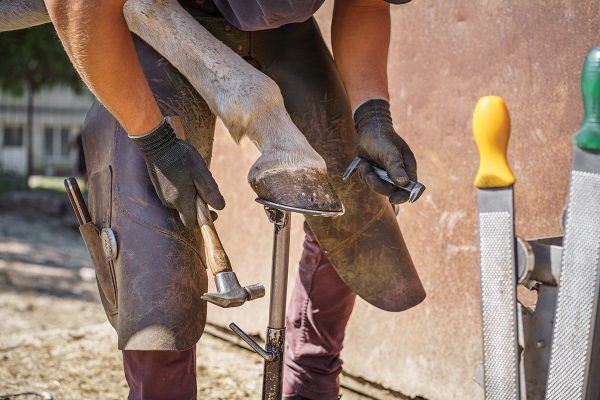
There are some things you can do as a rider, as well. When you ride, consider riding on good footing, says Dr. Vargas. Make sure it’s not too deep or slick, and that your horse doesn’t have to scramble to stay on his feet.
“Good shoeing is important, but well-cushioned and consistent footing will also help with comfort in the long-term,” she advises.
Navicular Bones: Not Just for Horses!
Horses aren’t the only ones with navicular bones in their feet. People have navicular bones, too! This bone is one of 26 found in each of your feet.
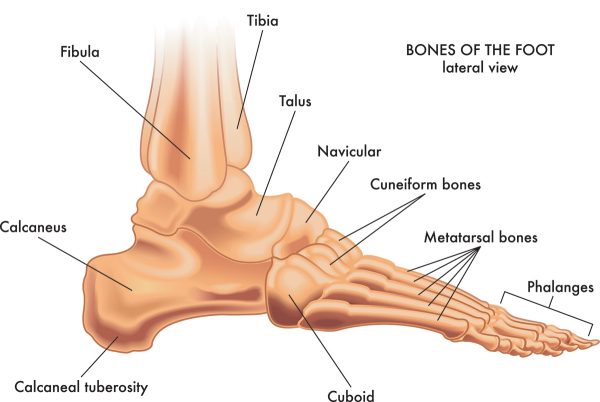
Some people—between 7 and 19 percent of Americans—have an extra navicular bone, called an accessory, that’s attached to the navicular. With how many bones are already in your foot, one extra one in there means there’s even less room! Like navicular syndrome horses, this extra bone can aggravate a tendon and become an issue.
The extra bone can cause some pain if your shoes are too tight, if you sprain your foot or ankle, or if you’re super active. The inside of your foot, where the extra bone is, can get red and sore; it may even swell. You may not be able to raise up on your heels when it’s irritated.
Just like a vet does with a horse, your doctor may press on the swelling and take an X-ray to see what’s going on inside your foot. They will test your strength in that leg and your range of motion. In people, the accessory navicular bone is often removed.
The condition tends to run in families, so if your parents or siblings have an accessory navicular bone, there’s a good chance you have one as well.
Key Takeaway
A diagnosis of navicular doesn’t mean you have to stop riding, but like any ailment, it’s important to find out what’s going on as soon as possible so you can make your horse more comfortable.
This article about navicular in horses appeared in the July/August 2024 issue of Young Rider magazine. Click here to subscribe!


